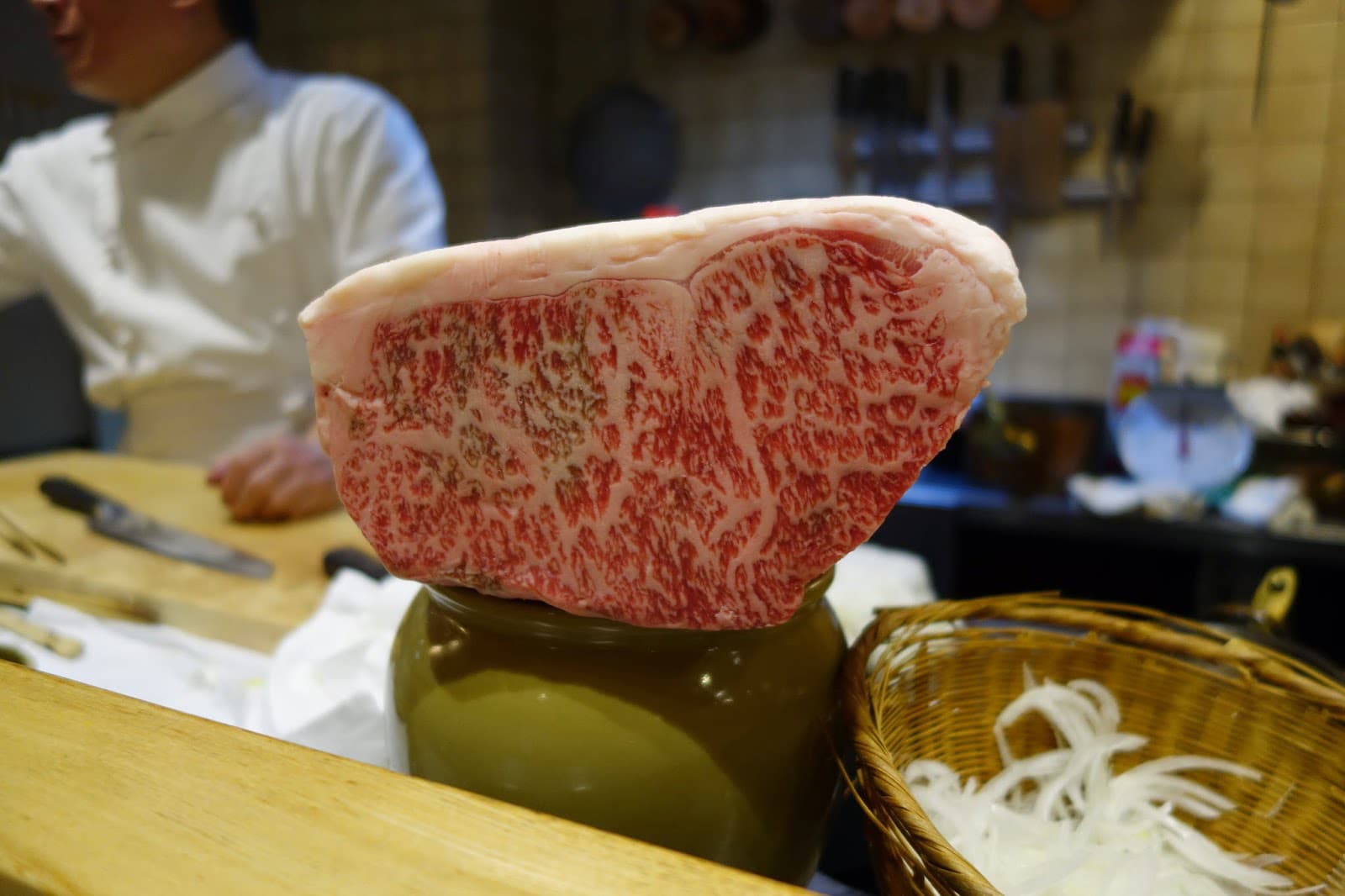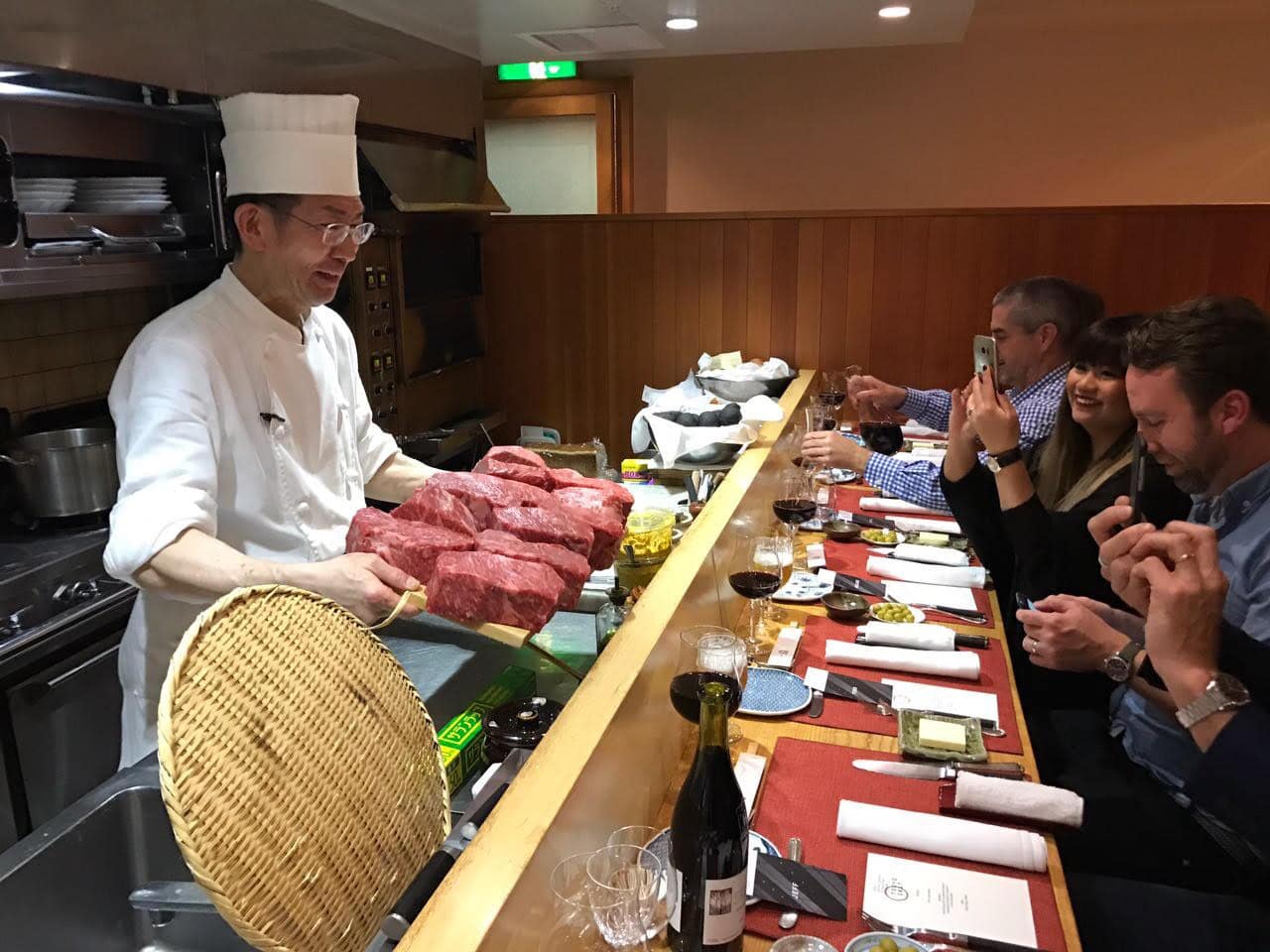
While Japan enjoys international acclaim for its sushi, for many gourmets and steak aficionados, a meal featuring premium Japanese beef is the pinnacle of Japanese dining. Widely regarded as the best and most expensive beef in the world, Japanese wagyu is renowned for its intense and striking marbling, rich flavour, and distinctive, tender texture.
A breed of elite cattle native to Japan, wagyu’s first syllable “wa” means Japan, while the second syllable “gyu” means cattle. There are four breeds of wagyu (pronounced “wag-you”) cattle: Japanese Black, Japanese Brown, Japanese Polled and Japanese Shorthorn.
Wagyu cattle have been selectively bred to maximise their unsaturated fat levels over several generations, giving wagyu beef its characteristic marbling and a higher percentage of omega-3 and omega-6 fatty acids than other beef varieties. Wagyu beef delivers a sweet rather than greasy taste and plenty of umami.
Until recently, wagyu was generally enjoyed in the Japanese styles of teppanyaki, sukiyaki and shabu-shabu, with diners often seated on a traditional tatami mat. Today, a handful of high-end yakiniku restaurants serving premium grilled wagyu counter-style enjoy rockstar status in Japan’s food scene. These restaurants have turned cooking wagyu into a fine art, grilling the beef for only seconds on each side to deliver a melt-in-your-mouth texture that you’ll only find in Japan.
Yakiniku venues such as Sumiyakiniku Nakahara, Yoroniku Ebisu and Yakiniku Jumbo enjoy such an impressive international reputation that celebrities from all over the world fly in just to enjoy a meal – it’s virtually impossible to get a booking without a local contact.
Equally difficult to book, Kawamura (often called “the best steakhouse in the world”), is run by the legendary Kawamura-san and is strictly introduction-only. Other prestigious restaurants lauded by Tokyo’s steak connoisseurs include Shima, Hirayama and Vesta. These restaurants deliver the intense and flavoursome result they’re renowned for by cooking their premium wagyu on very low heat for up to an hour.
Buoying wagyu’s international reputation and popularity, the team at Wagyumafia – who describe their mission as “bringing wagyu to the world” – have become something of a cultural phenomenon. These passionate wagyu ambassadors are famous for delivering ambitious 50-city world tours with pop-up wagyu experiences and opening a number of members-only restaurants frequented by the likes of David Beckham (I myself have a membership).
Japanese Wagyu breeders take extraordinary care in raising their cattle. While today, wagyu cattle are produced across the world, those bred and raised in Japan following traditional methods are regarded as delivering the ultimate in flavour and texture.
In Japan, grazing is relatively rare – most wagyu cattle live their entire lives in barns and pens and are hand-fed a traditional diet comprising of freshly cut green grass, hay and rice straw supplemented with corn, barley, soybean and wheat bran. Many breeders feed their cattle beer to stimulate their appetites, some give them regular massage with oil or sake to keep their stress levels low, and others even claim to play them classical music – although this is likely folklore rather than fact! Whatever the truth, raising wagyu the Japanese way is widely regarded to produce beef of unrivalled quality that’s the envy of the rest of the world.

Plan Japan provides exclusive access to some of Japan’s finest wagyu establishments, most who allow foreigners to dine by invitation only. We can work with you to craft a travel itinerary that will let you compare Japan’s top three wagyu – Kobe, Matsusaka and Ohmi – during VIP tastings at members-only restaurants:
- Kobe beef
Though some use the terms “wagyu” and “kobe” interchangeably, this is incorrect. Kobe is a brand of wagyu raised in the Kobe City area of Hyogo Prefecture, feeding on rice plants, corn and water from local streams. The most famous wagyu among non-Japanese, it’s known for its refined, rich sweetness and unique aroma.
- Matsusaka beef
Raised around Matsusaka City in the Mie Prefecture, only cows that haven’t given birth can be classified as Matsusaka wagyu. These pampered cattle enjoy a diet that includes beer and regular massages. While less famous than Kobe beef, Matsusaka is generally considered by locals to be superior – accordingly, it’s the most expensive type of beef in Japan.
- Ohmi beef
Raised around Lake Biwa in Shiga Prefecture east of Kyoto, Ohmi has the longest history of the ‘top three’, dating back more than 400 years. Ohmi’s fat content has a melting point of 24.8 degrees Celsius, significantly lower than other wagyu beef.
Experts in crafting authentic Japanese itineraries rich in “money can’t buy” experiences, Plan Japan is a boutique travel consultancy with staff in Melbourne and Tokyo. Our unmatched network of Japanese locals allows us to create unforgettable experiences that surpass client expectations – from fine dining to exclusive private whisky tastings and VIP golfing at Japan’s most exclusive invitation-only courses.
Contact us for more information about making an exclusive wagyu experience part of your next Japanese trip.

